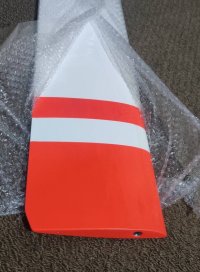Oskar
Member
- Joined
- Mar 10, 2007
- Messages
- 330
- Location
- Auckland, New Zealand
- Aircraft
- R22, MTO Sport, GyroBee, Mosquito Air
Doug,oskar
Beware that the Gyrotech blades may not be a direct bolt on and go, the weight distribution through out the blade from the metal to composite blades could be different. From my understanding and findings on their composite blades they do not chordwise balance at the normal 25%. so what they do is overbalance the blade at the tip, so the blade thinks it is balancing at 25% chord. with all the weight at the tip the cone angle and undersling may need to be adjusted. I found this out with the Helicycle I had them make up a set for mine they were to be a direct bolt on with no changes to the rotor system Because the weight distribution through the composite blade was different from the metal blades the cone angle and undersilng would need to be changed.They were going to make up another set of blades that would more match the weights of the Helicycle metal blades. That was almost 2 years ago have not heard a word since then.
Doug
Just my uneducated findings
I spoke to someone who installed Gyrotech blades on a Mosquito and he was very happy with the way they flew. Maybe they learnt something from your experience.
Will just have to see how the Gyrotech blades behave when I get into the air.
Oskar

